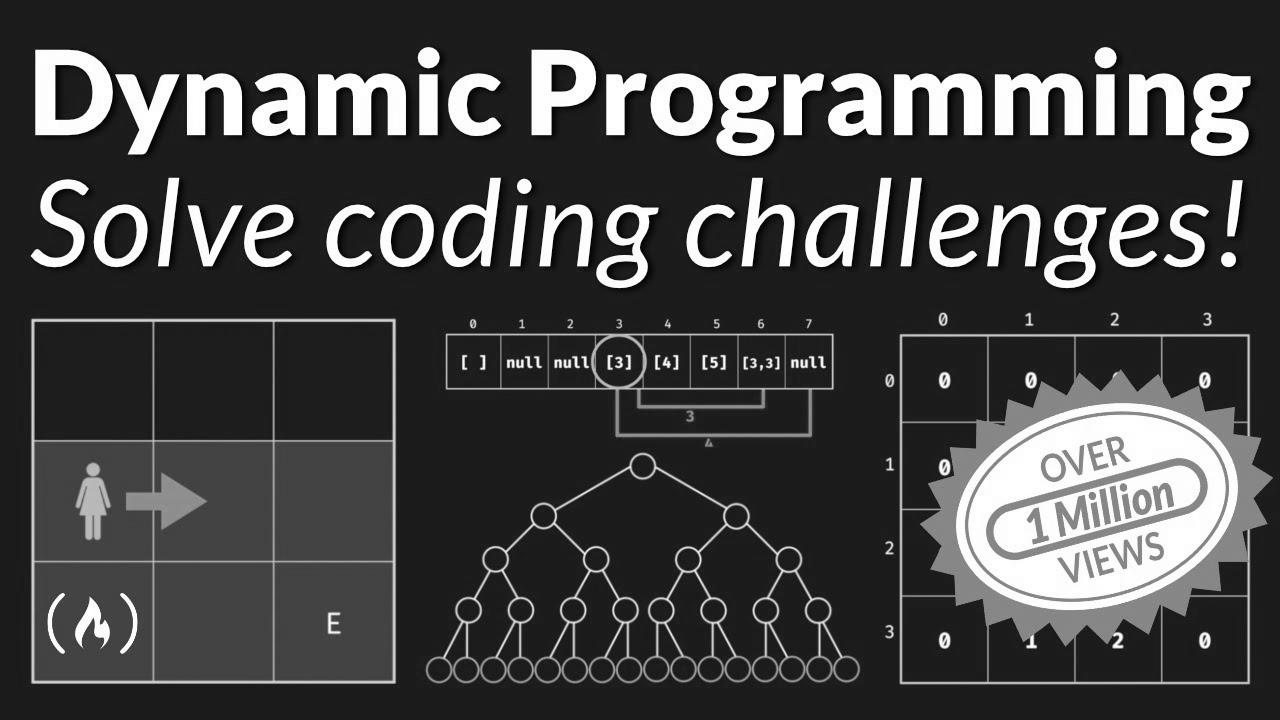Dynamic Programming – Be taught to Solve Algorithmic Problems & Coding Challenges
Warning: Undefined variable $post_id in /home/webpages/lima-city/booktips/wordpress_de-2022-03-17-33f52d/wp-content/themes/fast-press/single.php on line 26

Be taught , Dynamic Programming - Study to Solve Algorithmic Problems & Coding Challenges , , oBt53YbR9Kk , https://www.youtube.com/watch?v=oBt53YbR9Kk , https://i.ytimg.com/vi/oBt53YbR9Kk/hqdefault.jpg , 2309657 , 5.00 , Learn to use Dynamic Programming on this course for newbies. It can aid you resolve complicated programming problems, such ... , 1607007022 , 2020-12-03 15:50:22 , 05:10:02 , UC8butISFwT-Wl7EV0hUK0BQ , freeCodeCamp.org , 75276 , , [vid_tags] , https://www.youtubepp.com/watch?v=oBt53YbR9Kk , [ad_2] , [ad_1] , https://www.youtube.com/watch?v=oBt53YbR9Kk, #Dynamic #Programming #Study #Clear up #Algorithmic #Issues #Coding #Challenges [publish_date]
#Dynamic #Programming #Learn #Resolve #Algorithmic #Issues #Coding #Challenges
Learn how to use Dynamic Programming in this course for novices. It could aid you solve advanced programming issues, such ...
Quelle: [source_domain]
- Mehr zu learn Education is the procedure of getting new sympathy, knowledge, behaviors, trade, belief, attitudes, and preferences.[1] The power to learn is possessed by humans, animals, and some machinery; there is also bear witness for some kind of encyclopedism in convinced plants.[2] Some learning is immediate, spontaneous by a single event (e.g. being burned by a hot stove), but much skill and knowledge amass from perennial experiences.[3] The changes elicited by learning often last a lifespan, and it is hard to characterize knowledgeable material that seems to be "lost" from that which cannot be retrieved.[4] Human learning initiate at birth (it might even start before[5] in terms of an embryo's need for both physical phenomenon with, and freedom inside its situation within the womb.[6]) and continues until death as a consequence of ongoing interactions betwixt populate and their situation. The quality and processes involved in education are deliberate in many constituted w. C. Fields (including educational science, physiological psychology, psychonomics, cognitive sciences, and pedagogy), as well as emergent william Claude Dukenfield of noesis (e.g. with a shared pertain in the topic of encyclopaedism from safety events such as incidents/accidents,[7] or in collaborative encyclopaedism eudaimonia systems[8]). Investigation in such william Claude Dukenfield has led to the determination of individual sorts of learning. For good example, learning may occur as a effect of accommodation, or classical conditioning, operant conditioning or as a consequence of more intricate activities such as play, seen only in relatively rational animals.[9][10] Encyclopaedism may occur unconsciously or without cognizant knowingness. Eruditeness that an dislike event can't be avoided or on the loose may issue in a state named conditioned helplessness.[11] There is testify for human behavioral encyclopedism prenatally, in which dependency has been ascertained as early as 32 weeks into construction, indicating that the basic anxious organization is sufficiently developed and ready for eruditeness and remembering to occur very early in development.[12] Play has been approached by several theorists as a form of education. Children try out with the world, learn the rules, and learn to act through and through play. Lev Vygotsky agrees that play is crucial for children's maturation, since they make signification of their environment through performing arts instructive games. For Vygotsky, even so, play is the first form of encyclopaedism word and human activity, and the stage where a child begins to see rules and symbols.[13] This has led to a view that learning in organisms is forever age-related to semiosis,[14] and often associated with mimetic systems/activity.
In canSum memoization around 1:21:30… array numbers are said to be non negative. say the first element of the array is zero , then cansum() will go in infinite loop…right ?
3:52:52 the space is actually the size of the largest value in the numbers array, (due to growing the array to i + num) which could be way larger than the target value (unless I am misunderstanding and the array becomes sparsely represented for a huge index so not memory hungry)
Thank you so much!
"potentpot" hmmm
F' I am so stupid 🙁 my brain hurts. PLZ do this in c++
Amazing, simply amazing!
Can you please try and solve the "skateboard" example for canConstruct with the tabulation strategy. It doesn't look possible to solve it with tabulation strategy discussed here.
7:38
The best explanation I've ever had! Thanks
This is one of the best videos that explain DP very well.
Finally done!!!! 🎆
32:00
1:10:28
AMAZING course! Thanks Alvin.
A quick question please – is it me or does the canSum function fail when you pass in 0 as the target? It returns true irrespective of the array of numbers.
So I watched this, I agree it's very good for what it is . The examples are contrived to hammer home similar points. My question: how do these same exact problems change when you do NOT allow choosing the same elements repeatedly in the sets, and those sets are much, much larger?
Nothing can be as useful as this video on YT.
Thanks!
This is a great tutorial, thank you Alvin.
Just and advice for new comers, don't try so hard the tabulation part, it's not intuitive, the algorithms used overther are not generalistics and there is not any recipe that works totally for them (contrary to memorization) , there are enormous jumps on the logic, and it's ok no worries, with memorization part it's enoght to pass the problems. Success!
You lost me at 1/2 simplifies to 1
i just want to thank you n^m times🙏🙏🙏🙏🙏🙏🙏🙏🙏
This is an amazing course! Thank you for sharing this with us! Just curious, is there any way we can have access to the illustrations? They are also amazing and would be great to keep in some notes. Thank you!
Just completed the course and this is awesome! Thank you so much!!!
How CanSum(7,[2,3]) will return true it should be false can someone please explain me.